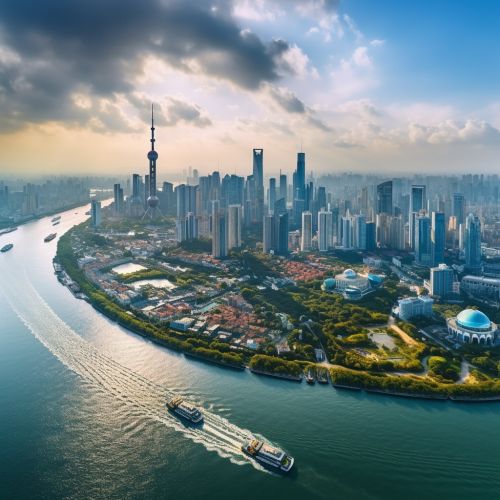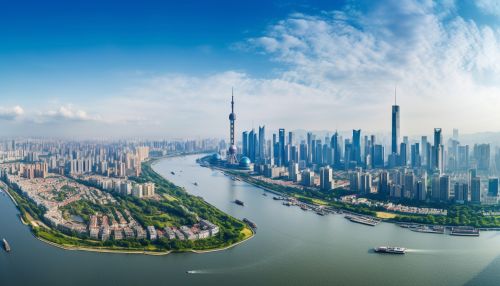Shanghai
Geography
Shanghai, located on the eastern coast of China, is one of the country's four municipalities under the direct administration of the central government. The city is situated on the southern edge of the estuary of the Yangtze River in the middle portion of the Chinese coast. It borders the provinces of Jiangsu and Zhejiang to the north, south, and west, and is bounded to the east by the East China Sea.


History
The history of Shanghai spans over a thousand years and closely parallels the development of modern China. Originally a small agricultural village, Shanghai developed during the late Qing Dynasty (1644–1912) as one of China's principal trading ports. Since the economic reforms of the early 1990s, the city has burgeoned to become a global financial hub and a cosmopolitan metropolis.
Economy
Shanghai is one of the main industrial hubs of China, playing a key role in China's heavy industries. A large number of industrial zones are backbones of Shanghai's secondary industry. In recent years, Shanghai's service industry has also begun to develop rapidly, and the city is gradually becoming a financial center, overtaking Hong Kong.
Culture
Shanghai is a popular tourist destination renowned for its historical landmarks such as The Bund, City God Temple and Yu Garden, as well as the extensive and growing Pudong skyline. It has been described as the "showpiece" of the booming economy of mainland China.
Education
Shanghai is a global hub of higher education, science, and technology. It boasts numerous universities and research institutes, including Fudan University and Shanghai Jiao Tong University, which are considered among the most prestigious universities in China.
Transportation
Shanghai has an extensive public transportation system, largely based on metros, buses and taxis. The city's rapid transit system, the Shanghai Metro, incorporates both subway and light rail lines and extends to every core urban district as well as neighboring suburban districts.
